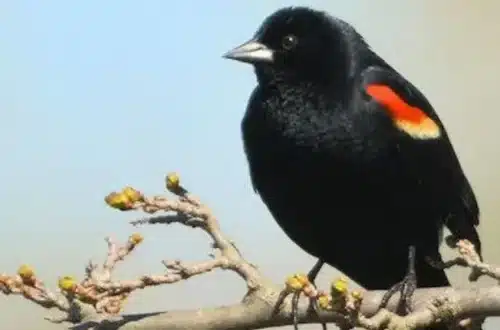Birds have captured human fascination with their beauty, unique languages, and social interactions. Different bird species have evolved specialized ways to share information and connect, from melodious songbirds to silent soaring raptors. The diversity of avian communication provides insight into bird behavior, relationships, and intelligence.
This article explores the fantastic breadth of how birds communicate. We’ll examine visual displays, distinctive calls, enchanting songs, and even dance moves birds use to signal messages. You’ll gain a new appreciation for the complexity behind our feathered friends’ social world.
How Birds Communicate

Nature’s Lexicon: A Prelude to Avian Communication
In the vast expanse of the avian kingdom, communication isn’t just a necessity; it’s an art form. Before delving into the specific ways birds communicate, let’s unravel the foundation of this intricate language. Whether it’s the musical tunes of songbirds or the rhythmic dances of birds of paradise, each species contributes to the rich tapestry of avian communication.
The Chirp Chronicles: A Bird’s Vocal Vocabulary
Avian vocalizations are the cornerstone of their communication. From the joyful trills of robins to the haunting calls of owls in the night, each sound carries a distinct meaning.
These vocalizations serve many purposes, including mate attraction, territorial defense, and warning signals. The nuances of these chirps provide a gateway into the emotional lives of our feathered friends.
Visual Poetry in Flight: The Dance of Plumage
For many bird species, words are not enough. The vibrant plumage becomes a canvas for expressing emotions and intentions. Intricate displays of color, patterns, and movements convey courtship, aggression, and even submission messages.
Observing the visual poetry in flight reveals a dimension of communication beyond the audible, where every feather speaks a silent language.
Feathered Morse Code: Tapping into Non-vocal Signals
Beyond the obvious vocal and visual cues, birds utilize subtle non-vocal signals to communicate. Feather ruffling, tail flicks, and beak gestures contribute to the intricate dance of communication. These slight movements often go unnoticed by casual observers, but they are crucial in conveying nuanced messages within flocks and pairs.
Social Structures and Hierarchies
Birds are not solitary beings; they thrive in social communities. How these communities operate requires understanding bird populations’ social structures and hierarchies.
From complex mating rituals to communal nesting behaviors, the social dynamics of birds underscore the importance of communication in maintaining cohesive avian societies.
The Symphony: Insights into Avian Communication
The Dawn Chorus Phenomenon
The break of dawn marks the beginning of an avian symphony known as the Dawn Chorus. This daily ritual involves a cacophony of birdsong, each species contributing unique notes. The Dawn Chorus serves multiple purposes, from territory establishment to mate attraction, creating a harmonious start to the day in the avian world.
Birds as Impersonators
Some avian species showcase remarkable mimicry skills, imitating the sounds of other birds, animals, or even mechanical noises. The lyrebird, for example, can replicate chainsaws and camera shutters with astonishing accuracy. Mimicry serves as a form of defense and a means of attracting mates, showcasing the versatility of avian communication.
Choreography of Love
Birds engage in elaborate courtship dances, where synchronized movements and displays of plumage play a pivotal role. These dances serve as a visual spectacle and demonstrate fitness to potential mates. From the intricate displays of the peacock to the synchronized sky dances of albatrosses, courtship rituals highlight the creativity embedded in avian communication.
The Language of Danger
In the avian world, vigilance is paramount for survival. Birds have developed specific alarm calls that signal potential threats, allowing entire flocks to react swiftly. These alarm calls vary between species and can convey information about the type of danger, whether a ground predator, aerial threat, or even a human presence.
Communicating with Offspring
Parental communication is crucial for the survival of bird species. From teaching fledglings to forage to warning them of dangers, parent birds employ diverse communication strategies. Observing these interactions provides insights into the nurturing side of avian communication, showcasing the bonds that ensure the next generation’s success.
Final Thoughts
In the mesmerizing world of avian communication, How Birds Communicate emerges as a captivating exploration into nature’s symphony. From vocal melodies to visual poetry, feathered Morse code, and intricate dances, birds weave a complex tapestry of connection.
The insights into the Dawn Chorus, mimicry, courtship rituals, and parental communication showcase the depth of their social world. Indeed, How Birds Communicate reveals the fascinating language that unites our feathered friends in the wild.






